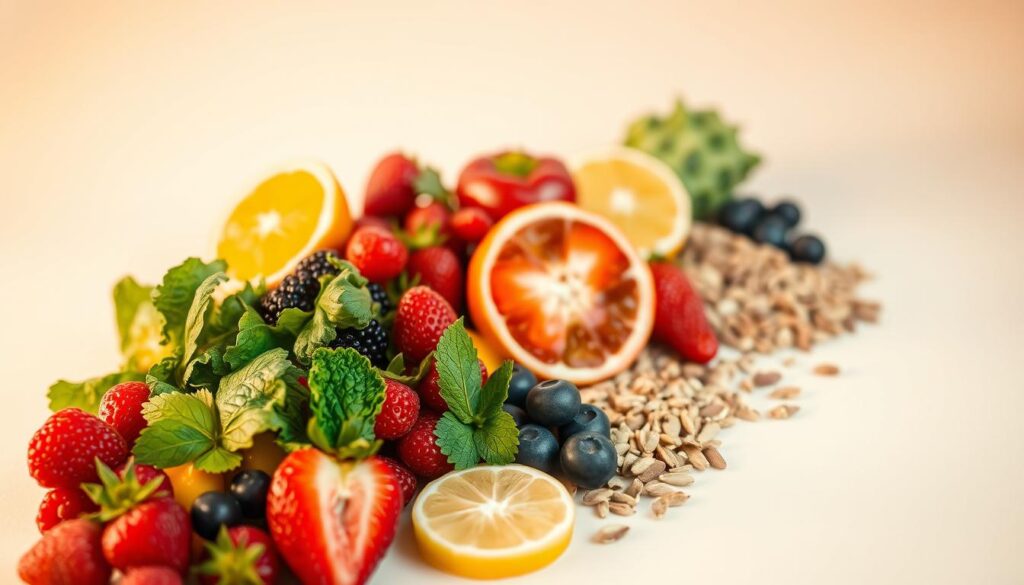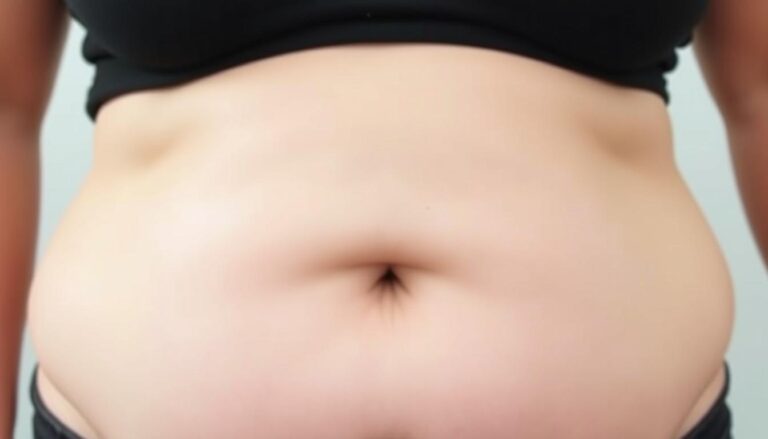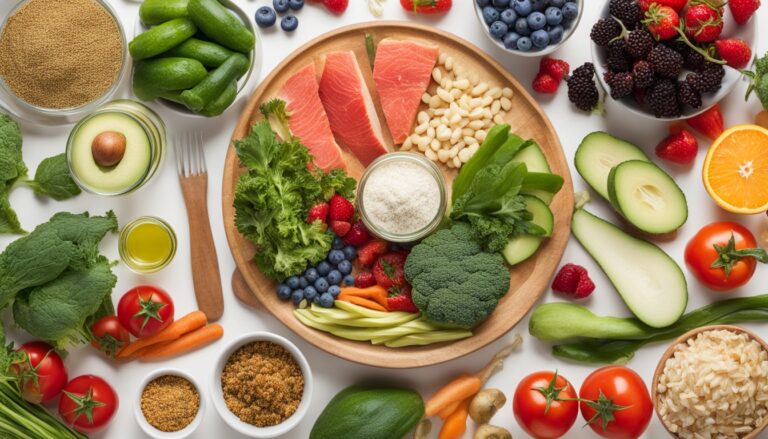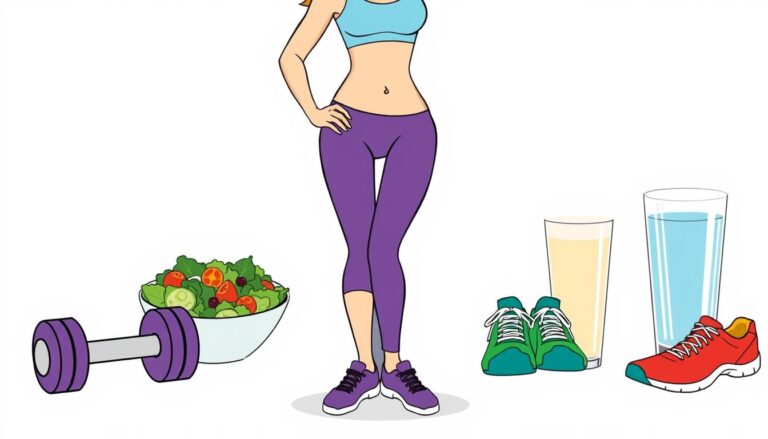Many Americans consume far more sugar than recommended with 65% exceeding daily limits.
The American Heart Association advises no more than 9 teaspoons for men and 6 for women yet added sugars hide in 74% of processed foods. Cutting them out for a month can reset unhealthy habits and improve overall health.
Reducing sugar intake stabilizes blood sugar levels and lowers insulin spikes reducing risks tied to diabetes and obesity. Unlike natural sugars found in fruits added sugars contribute to inflammation and weight gain. A 30-day challenge may boost energy and support weight loss.
Key Takeaways
- Most U.S. adults exceed daily sugar recommendations.
- Added sugars are prevalent in processed foods.
- Cutting sugar improves energy and reduces inflammation.
- Natural sugars differ from harmful added sugars.
- A 30-day reset may lower diabetes and obesity risks.
Introduction to the 30 Day No Sugar Challenge
Cutting added sugars requires careful label reading and dietary adjustments. The 2020–2025 Dietary Guidelines recommend limiting sweeteners to ≤10% of daily calories. Yet a UCSF study reveals manufacturers add them to 74% of processed foods.

This challenge eliminates all added sugars including syrups and artificial sweeteners while permitting natural sugars from fruits and dairy. Common hidden sources include
- Bread and crackers
- Salad dressings and condiments
- Canned soups and sauces
The American Heart Association advises men to consume ≤36g of added sugars daily post-challenge.
Sugary beverages alone contribute 312 extra calories daily. The table below contrasts natural and added sugar sources:
| Natural Sugars | Added Sugars |
|---|---|
| Fruits fructose | Soda high fructose corn syrup |
| Milk lactose | Granola bars honey cane sugar |
| Vegetables glucose | Ketchup molasses |
This reset is temporary but encourages long-term diet shifts. Reducing sugar intake lowers risk factors for chronic diseases while improving energy.
The Science Behind Sugar and Your Body
The human body processes natural and added sugars differently impacting metabolism in distinct ways. While glucose fuels cells directly, fructose requires liver conversion affecting fat storage and blood sugar regulation. Understanding these mechanisms highlights why sugar type matters.
How Added Sugars Affect Metabolism
Added sugars like high-fructose corn syrup, overwhelm the pancreas by triggering rapid blood sugar spikes. This forces the body to release excess insulin which over time may lead to insulin resistance a precursor to type 2 diabetes.
Unlike natural sugars refined sugars lack fiber causing faster absorption. A 2021 NIH study linked daily soda consumption to a 26% higher risk of non-alcoholic fatty liver disease NAFLD due to fructose driven hepatic fat production.
Natural vs. Added Sugars Key Differences
Natural sugars in fruits and dairy come bundled with nutrients and fiber slowing glucose release. For example an apple’s fiber mitigates fructose absorption while soda delivers pure sugar without metabolic buffers.
| Natural Sugars | Added Sugars |
|---|---|
| Slow digestion fiber rich | Rapid absorption no fiber |
| Contains vitamins minerals | Empty calories |
| Supports satiety | Triggers overeating |
Research confirms that diets high in added sugars correlate with obesity and heart disease. Opting for whole foods helps maintain metabolic balance without sacrificing sweetness.
Key Benefits of a 30 Day Sugar Reset
A 30-day sugar reset delivers multiple physiological benefits backed by research. Eliminating added sugars stabilizes metabolic functions reduces chronic disease risks and enhances overall well-being. These changes often begin within the first week.

Read more: Eat Plants Balance Blood Sugar Lose Weight
Improved Blood Sugar and Insulin Sensitivity
Cutting refined sugars prevents rapid glucose spikes, allowing insulin levels to normalize. Studies show fasting blood sugar drops by 10–12% within 8 weeks on low-sugar diets. This reduces diabetes risk significantly.
Weight Loss and Reduced Obesity Risk
Removing 312 daily calories from sugary beverages alone aids weight loss. A 2023 NIH trial linked low sugar diets to 3–5% body fat reduction. Liver fat a key obesity marker decreased by 10.5%.
Enhanced Energy and Mental Clarity
Replacing sugar with complex carbs like quinoa or sweet potatoes sustains energy. Participants in a UCSF study reported 27% fewer afternoon crashes and improved focus.
Better Skin Health and Reduced Inflammation
Lower sugar intake decreases advanced glycation end-products AGEs slowing skin aging. CRP inflammation markers dropped 24% in subjects avoiding sugary drinks per a Journal of Nutrition study.
Reducing added sugars lowers triglycerides by 29% and systolic blood pressure by 5 points.
- Stabilized glucose levels reduce diabetes risk within weeks.
- Natural sugars from fruits maintain energy without crashes.
- Lower inflammation supports joint and skin health.
Unexpected Challenges You Might Face
Reducing sugar triggers physiological responses similar to withdrawal from addictive substances. Dopamine driven cravings may intensify during the first week making adherence difficult. Understanding these hurdles prepares individuals for a smoother transition.

Sugar Withdrawal Symptoms
Abruptly cutting sugar intake can cause headaches irritability and fatigue collectively termed keto flu. A 2022 Nutrition Journal study linked these symptoms to dopamine depletion peaking at 48–72 hours post-elimination.
Common withdrawal effects include
- Mood swings due to serotonin fluctuations
- Brain fog as glucose metabolism adjusts
- Increased cravings for sweet food
Gradual reduction lowers withdrawal severity by 40% compared to abrupt cessation.
Navigating Hidden Sugars in Everyday Foods
Added sugars disguise themselves under 60+ names complicating label reading. Condiments marinara sauce and whole grain bread often contain unexpected sweeteners.
| Sugar Aliases | Common Foods |
|---|---|
| Evaporated cane juice | Yogurt, granola |
| Brown rice syrup | Protein bars |
| Maltodextrin | Salad dressings |
Meal prepping minimizes reliance on processed items. Opt for whole ingredients like roasted vegetables or unsweetened nut butters to avoid accidental hidden sugars.
Foods to Eat and Avoid During the Challenge
Choosing the right foods is crucial for a successful sugar free month. Prioritizing whole unprocessed options ensures adequate nutrients while avoiding metabolic disruptions. This section outlines optimal choices and common pitfalls.
Nutrient Dense Whole Foods to Focus On
Fill your plate with fiber rich vegetables, lean proteins, and healthy fats. These stabilize blood sugar and curb cravings:
- Vegetables Broccoli spinach and bell peppers provide vitamins without spiking glucose.
- Proteins Eggs grilled chicken and salmon support satiety and muscle repair.
- Healthy fats Avocados and nuts slow digestion preventing energy crashes.
Opt for unsweetened dairy like Greek yogurt and small portions of low glycemic fruits like berries. Quinoa and sweet potatoes offer complex carbs for sustained energy.
Sneaky Sources of Added Sugars to Eliminate
Many seemingly healthy foods contain added sugars. Watch for these disguised sweeteners:
- Flavored oatmeal Often has 12g+ sugar per packet choose plain oats.
- BBQ sauce Just 2 tablespoons can deliver 14g sugar from molasses or corn syrup.
- Granola Some brands pack 8g sugar per ¼ cup check labels.
Avoid artificial sweeteners like Splenda, which may trigger cravings. Stick to unsweetened beverages like sparkling water or black coffee.
| Approved Foods | Forbidden Items |
|---|---|
| Roasted vegetables | Ice cream |
| Unsweetened almond milk | Sweetened liquor |
| Grass-fed beef | Flavored yogurt |
Sample meal: Grilled chicken with roasted Brussels sprouts and quinoa. This balances protein fiber and complex carbs keeping added sugars at zero while maximizing nutrients.
How to Prepare for a Successful 30 Day Reset
Proper preparation significantly increases the chances of completing a sugar free challenge. Strategic meal planning and social navigation minimize temptations while ensuring balanced nutrition. These practical tips help maintain consistency throughout the 30-day period.
Meal Planning and Grocery Shopping Tips
Weekly meal prep reduces reliance on processed snacks. Batch cooking proteins like chicken or tofu with roasted vegetables saves time. Always check labels for ingredients ending in ose or containing syrup these indicate hidden sugars.
Smart grocery shopping strategies include:
- Prioritizing perimeter aisles Fresh produce, meats, and dairy typically contain fewer additives.
- Using a shopping list Pre planned lists prevent impulse purchases of sugary items.
- Choosing whole ingredients Opt for plain oats instead of flavored packets with 12g+ sugar.
Preparing 3-4 base meals weekly reduces sugar consumption by 38% compared to spontaneous eating.
Managing Social Situations and Dining Out
Social gatherings often revolve around sugary foods requiring clear communication about dietary goals. Politely informing hosts in advance helps avoid uncomfortable situations. Many restaurants accommodate special requests when notified beforehand.
When dining out
- Select grilled proteins Request chicken or fish without glazes or sauces.
- Choose steamed vegetables Avoid candied or honey glazed sides.
- Opt for oil/vinegar dressings These contain no added sugars unlike bottled dressings.
| Social Situation | Strategy |
|---|---|
| Office parties | Bring sugar free snacks to share |
| Coffee dates | Order black coffee or herbal tea |
| Family dinners | Suggest healthier dessert alternatives |
Staying hydrated with water or unsweetened tea helps curb cravings during challenging social situations. Carrying portable snacks like nuts prevents emergency sugar consumption when options are limited.
Long Term Habits to Adopt After the Challenge
The real test begins after completing the sugar reset adopting lifelong balanced eating patterns. Post challenge the goal shifts to maintaining health benefits while avoiding rebound overconsumption. Experts recommend limiting added sugar to ≤10% of daily calories, a guideline supported by the Dietary Guidelines for Americans.
Reintroducing Sugar Mindfully
Gradual reintroduction prevents metabolic shock. Start with natural sources like fruit before considering minimally processed sweeteners. Tracking intake via apps helps stay within American Heart Association limits 36g/day for men.
Key strategies:
- 80/20 rule: 80% whole foods, 20% mindful treats like dark chocolate.
- Replace soda with fruit-infused water to reduce diabetes risk long term.
- Read labels for hidden sugars e.g. maltodextrin in sauces.
Sustainable Low Sugar Eating Patterns
Prioritize nutrients dense meals to support stable weight and energy. Designate sugar free zones at home like keeping desserts out of sight. Regular check ins with a dietitian enhance accountability.
| Habit | Benefit |
|---|---|
| Meal prepping | Reduces reliance on processed foods |
| Choosing whole grains | Lowers obesity risks |
Rebound overconsumption negates 30-day gains within weeks consistency is key.
Conclusion Is a Sugar Free Month Worth It?
A sugar-free month reveals hidden dependencies while boosting metabolic health. Participants often report stabilized blood sugar sharper focus and reduced inflammation proof that cutting sugar delivers tangible benefits.
The challenge educates about sneaky sweeteners in processed diet staples. Rather than permanent deprivation it encourages mindful reductions to lower diabetes and heart disease risks long-term.
Transitioning to sustainable eating patterns like prioritizing whole foods maintains progress. Start small swap soda for infused water or choose fruit over candy. Every step counts toward lasting wellness.
Ready to reset your relationship with sugar? Begin today your body will thank you.





